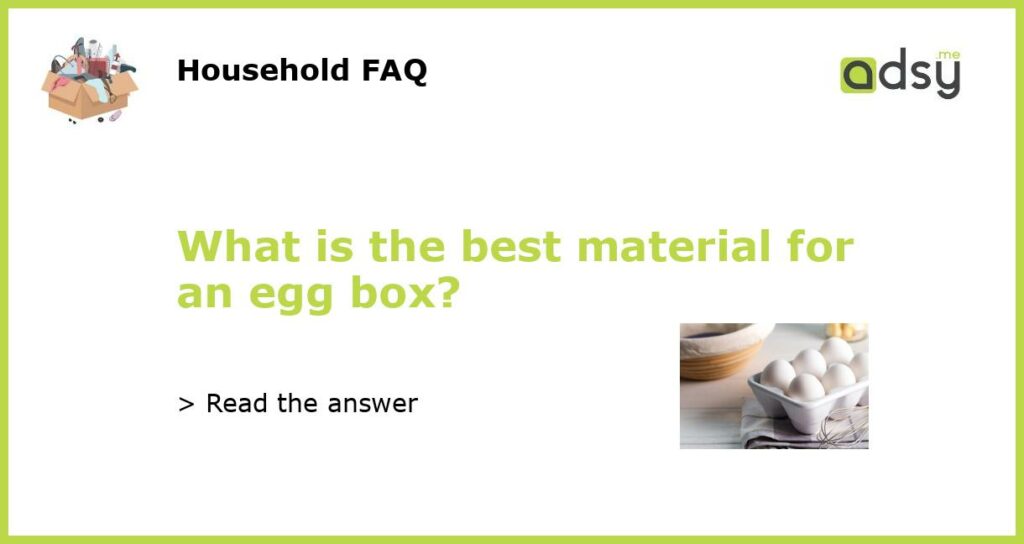Egg boxes are used to protect and transport eggs. They come in different materials, sizes, and shapes. The choice of the material for egg boxes depends on several factors, including cost, availability, environment-friendliness, and ability to protect the eggs. This article examines four commonly used materials for egg boxes and their pros and cons.
Polystyrene egg boxes
Polystyrene egg boxes are the cheapest and most used egg boxes in the world. They are lightweight and can be molded into different shapes and sizes. These egg boxes are designed to cushion eggs and protect them from breakage during transportation.
Although polystyrene egg boxes are cheap and lightweight, they have several disadvantages. First, they are non-biodegradable, meaning that they do not decompose quickly and pose a significant environmental hazard. Second, polystyrene egg boxes are not reusable, meaning that they generate more waste and increase disposal costs.
Pulp egg boxes
Pulp egg boxes are made from recycled paper and cardboard. They are environmental-friendly and biodegradable, meaning that they decompose quickly and do not pose an environmental hazard. Pulp egg boxes are sturdy and provide excellent protection for eggs.
The disadvantages of pulp egg boxes are that they are more expensive than polystyrene egg boxes and not as readily available. Additionally, they deform when exposed to water, which can damage the eggs when transporting them in wet environments.
Plastic egg boxes
Plastic egg boxes are made from plastic, which is lightweight and durable. These boxes are available in different shapes and sizes and can be reused several times. They provide good protection for eggs and are easy to clean and maintain. Plastic egg boxes are also available in transparent designs, enabling customers to view the contents of the box easily.
The disadvantages of plastic egg boxes include that they pose an environmental hazard, especially when not disposed of properly. They are non-biodegradable and remain in the environment for hundreds of years.
Foam egg boxes
Foam egg boxes are made of expanded polystyrene foam. They are lightweight and cheap, providing good protection for eggs during transportation
The disadvantages of foam egg boxes are that they are non-biodegradable and pose an environmental hazard when not disposed of properly. They are also not reusable, generating more waste and increasing disposal costs.
The choice of the material for egg boxes depends on several factors, including availability, cost, environmental-friendliness, and ability to protect eggs. Polystyrene, pulp, plastic, and foam are the commonly used materials for egg boxes. While each material has its advantages and disadvantages, environmental-friendliness should be a crucial factor in choosing the right material for egg boxes. This will help reduce waste and minimize environmental damage.






